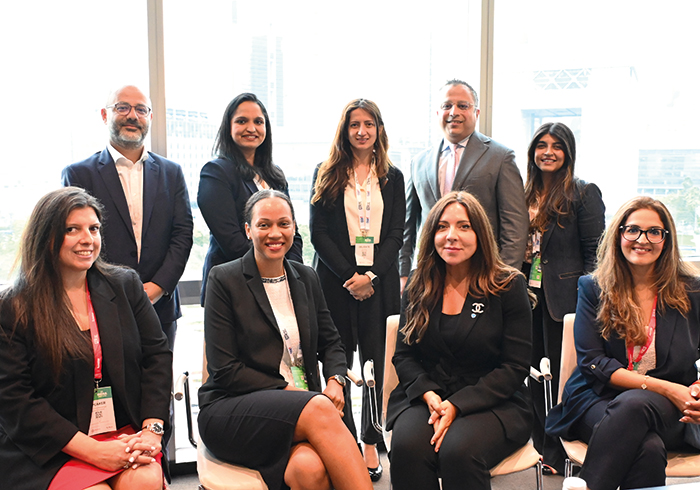Held on the sidelines of the GTR Mena 2025 event in Dubai – just before a new wave of global diversity, political and societal challenges – this roundtable brought together senior leaders in transaction banking to explore the cultural, structural and personal factors shaping the gender leadership gap, and why real inclusion means moving beyond quotas.
Roundtable participants:
- Nike Adebowale, regional head of business management, Global Trade Solutions, HSBC Middle East
- Komal Bajaj, director, B2B market development UAE, Visa Business Solutions
- Zena Brake, credit director – Middle East, Allianz Trade
- Fatenah Danab, head of trade and working capital, Middle East, Barclays (moderator)
- Amr El Haddad, head of transaction banking, National Bank of Kuwait
- Naura Hussain, director, trade asset sales & syndications for Africa & Middle East, Standard Chartered
- Semih Ozkan, executive director, head of corporate payments sales, Middle East & North Africa, JP Morgan Payments
- Caryn Pace-Messenger, managing director, global trade and supply chain finance, Bank of America
- Najma Salman, managing director, co-head of cash and trade for financial institutions, CEEMEA, Deutsche Bank

Danab: To kick things off, when this topic was first proposed, the mixed and even controversial reactions it received highlighted just how complex and unresolved the issue of gender diversity in leadership still is. Some questioned whether it’s even a topic worth discussing, while others raised concerns about tokenism. And yet, the data tells a clear story: women currently hold only 12% of senior management roles in GCC banking, and just 7% of board seats – far below the global average of 20%. From your perspective – whether global, regional or within your own organisation – how would you describe the current state of gender diversity in leadership? Are we seeing meaningful progress, or does the gap remain as wide as ever?
Adebowale: It’s clear from the stats that Danab has just illustrated that the industry is still significantly underperforming in terms of leadership diversity, however there are encouraging signs of improvement. At HSBC, when we look at gender diversity across the bank, we’re at about 51% women globally, which drops to 34% at a senior leadership level. It’s a similar story in the UAE: around 45% overall, but just 35% in leadership roles. We’ve been working hard to get that number up – from 31% in 2021 to where we are now; so there’s progress, but still a long way to go.
Ultimately it takes time to shift the needle in big organisations, but it’s moving in the right direction.
Salman: For me, it’s more about how you look at it – globally, regionally and at the personnel level. And does anything need to be done? Definitely. We’re not there yet. Like you said, it’s one of the most debated topics – and that alone shows there’s a gap. You’ve got 51% of the population…
Read More: Championing gender equity in Mena’s transaction banking sector



